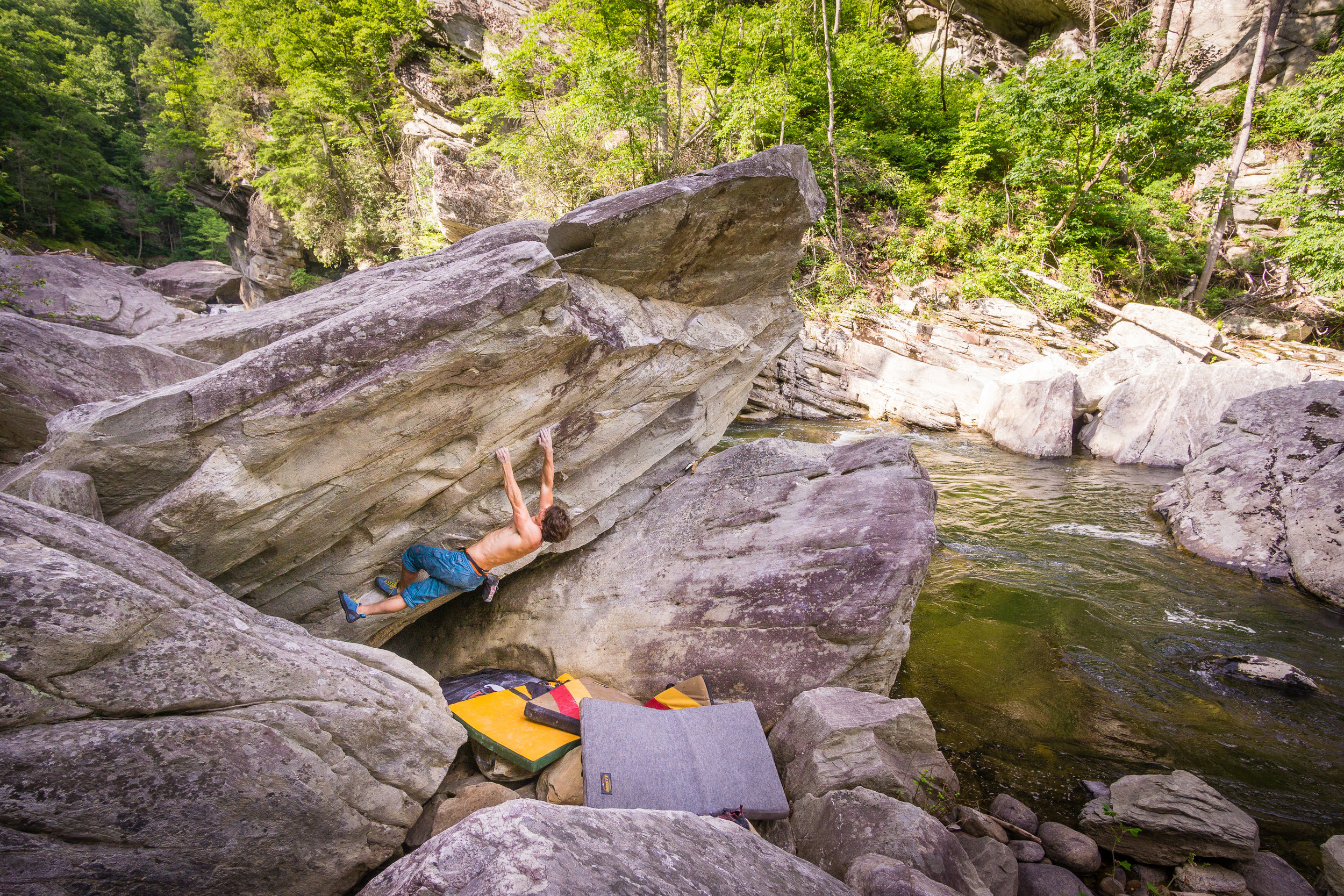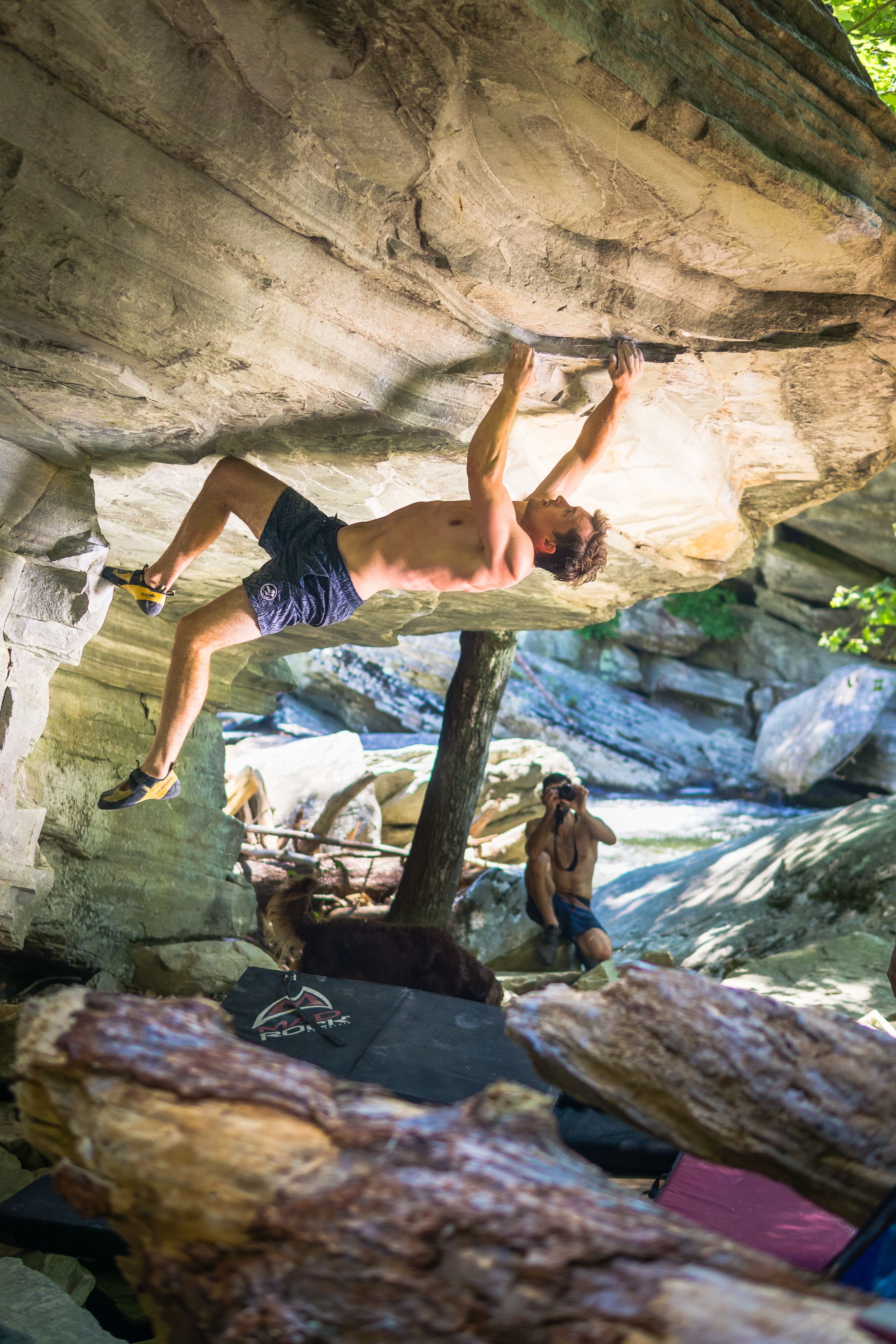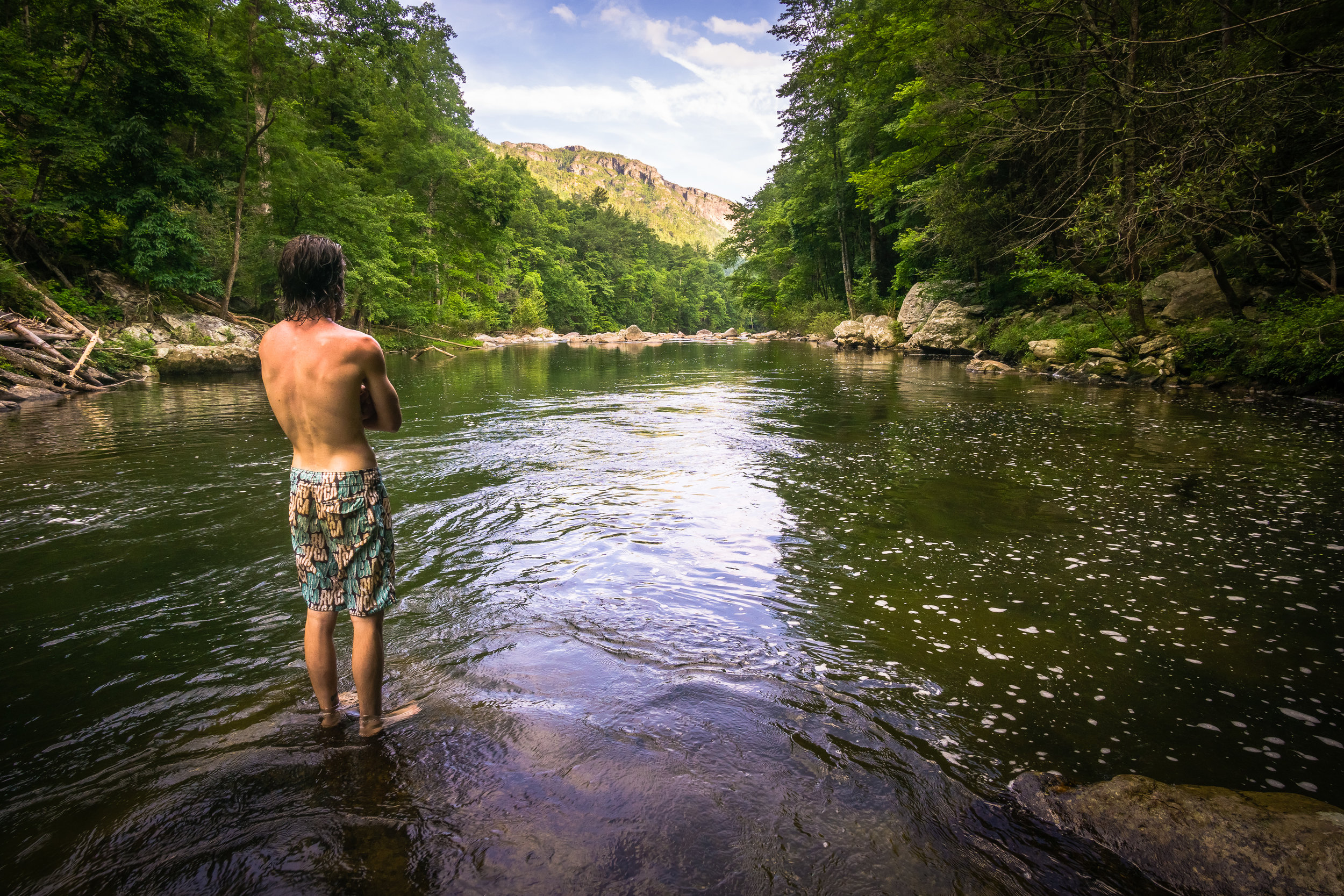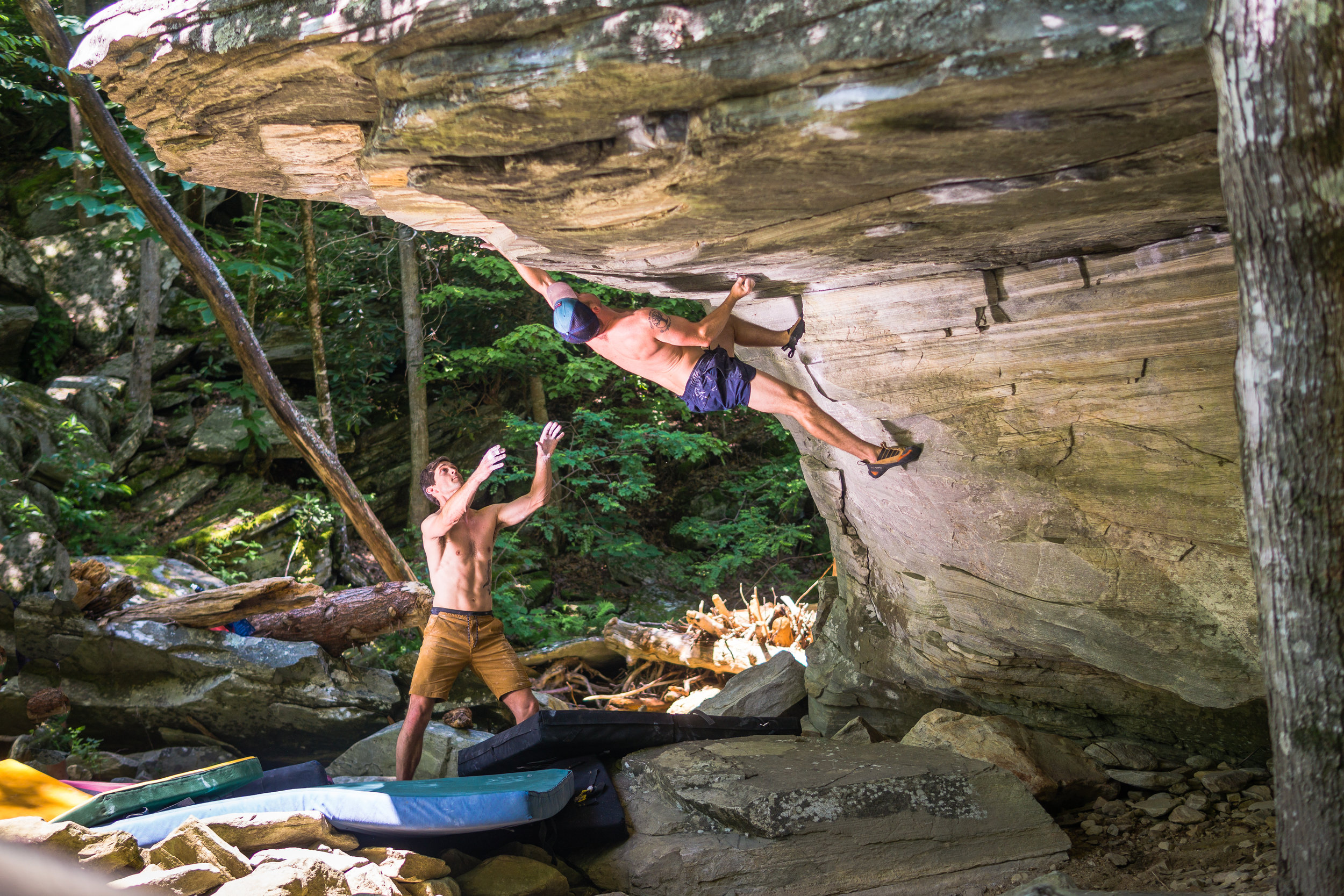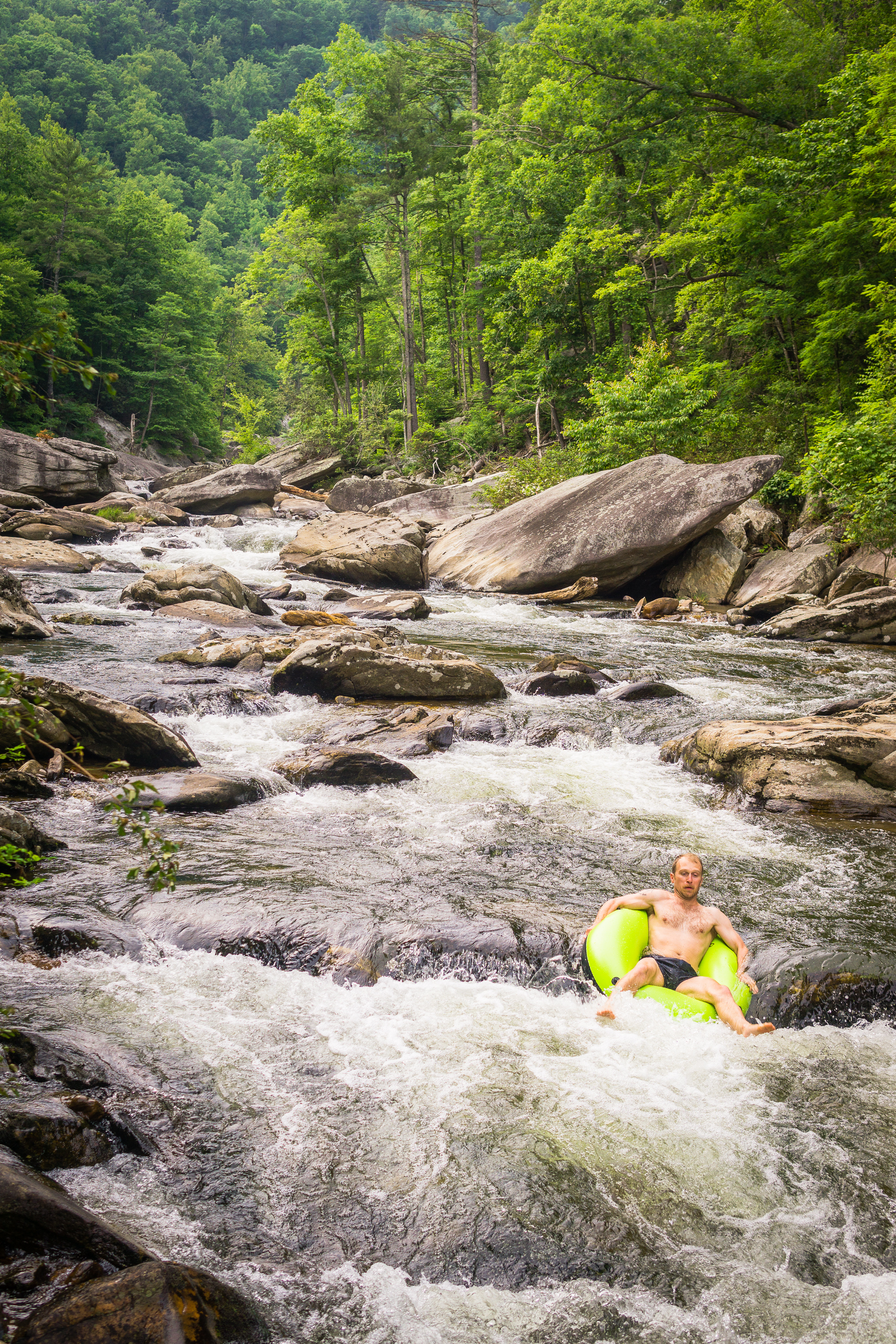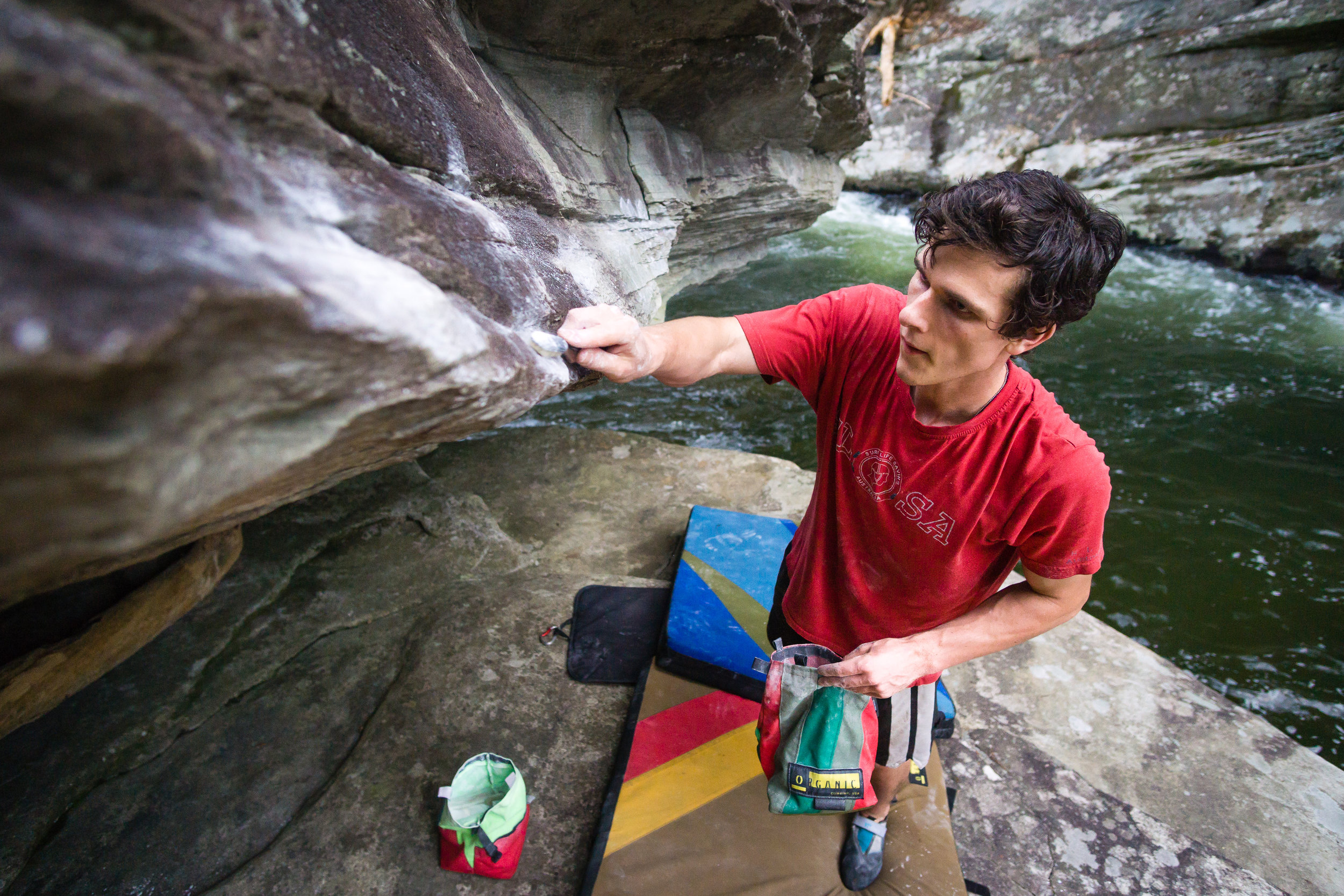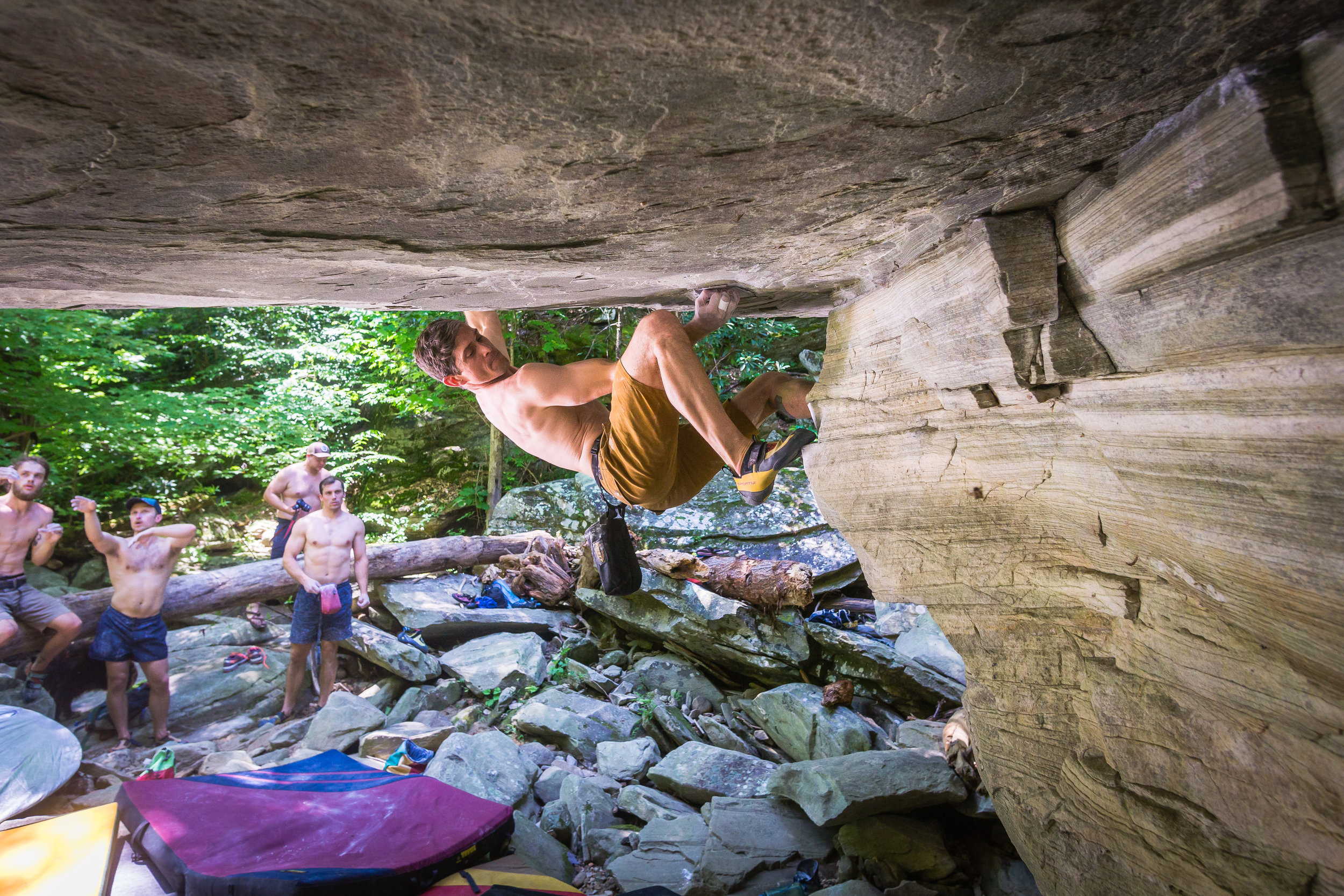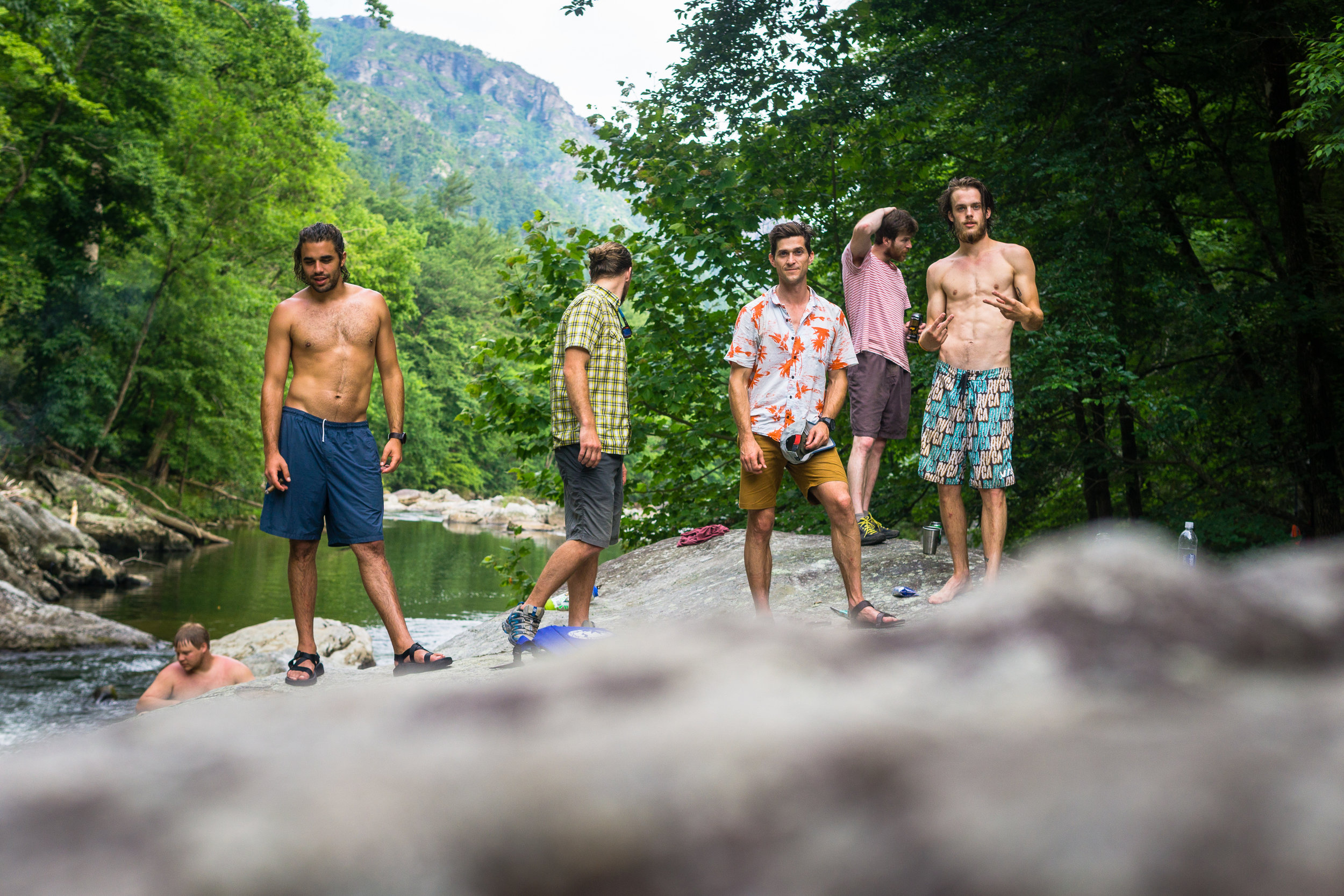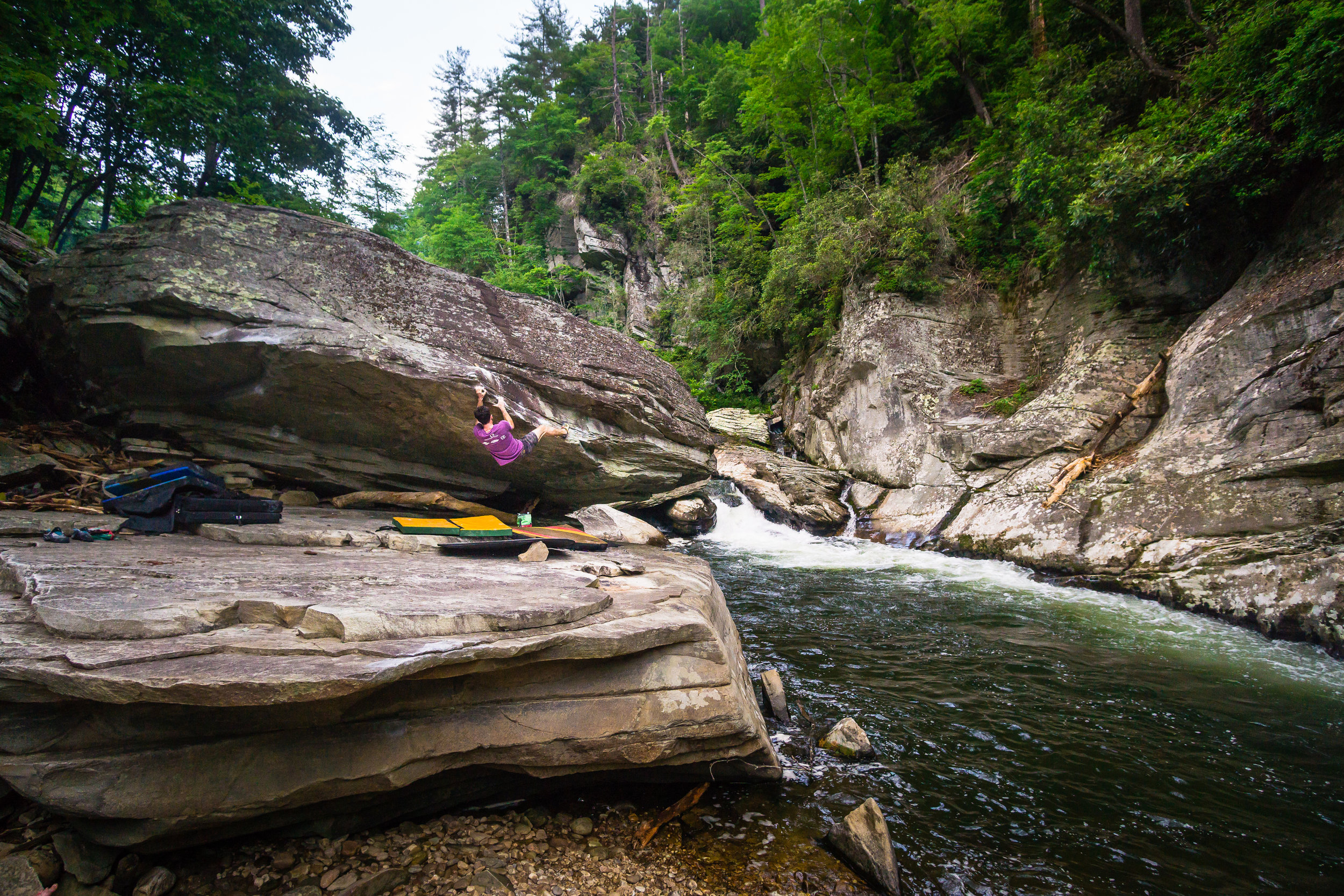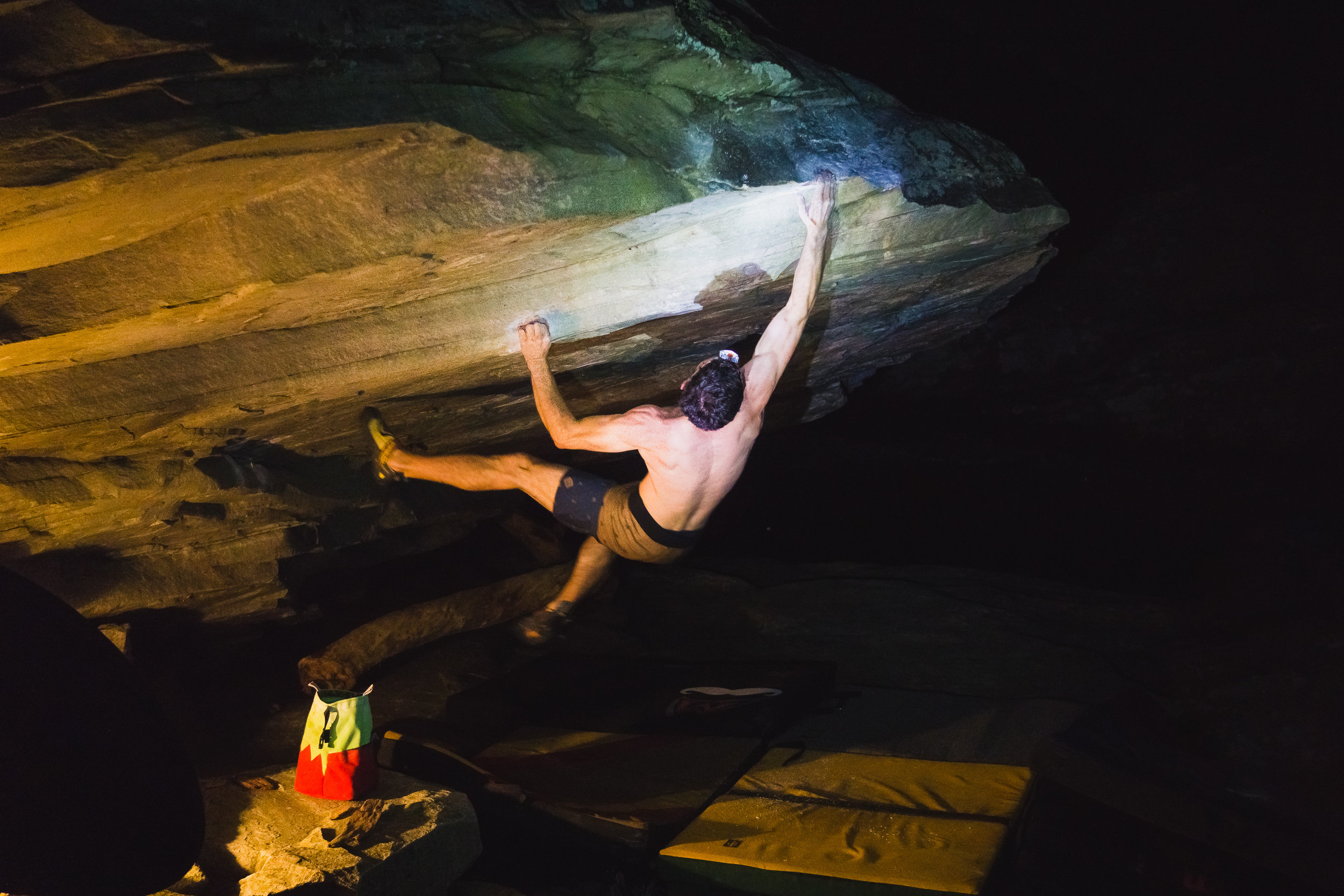The Linville Experience

In Western North Carolina lies the Linville Gorge, an ancient gash in the earth, created by rock and sculpted by water. The dramatic landscape offers brilliant views, steep terrain, rushing rapids and a lifetime's worth of exposed rock to explore. Endless cliffs line each side of the gorge, offering plenty of long multi-pitch routes with wild exposure. Tucked in the forest below, small crags can be found littered throughout—and at the very bottom of this magnificent pit, a thousand feet below the rim of the gorge, runs the Linville river and the boulders that rest on its banks.
I found myself hiking in several nights worth of food, camping supplies and climbing equipment down a steep poison ivy infested trail. In total, I lost a thousand feet of elevation by the time I reached the bottom. A heinous hike for someone packing light, I found it quite miserable with a full pack and crash pad weighing me down.
I tried not to think about how difficult the hike out would be. As it was my first time venturing down to boulder, my psych overpowered my exhaustion. Over the years I had been told by many how incredible it is to experience the bouldering in the gorge. I had heard tales of perfect rock in an epic setting that offered the best in Western North Carolina, and I believed it. The gorge had never failed to disappoint me in any way, especially when it came to rock climbing.
After what felt like an eternity of hiking, I arrived at the bottom, welcomed by friends and a cool river to jump in. I dropped my things at the campsite, a flat area nestled between trees and rocks adjacent to a perfect swimming hole. Tiers of gentle rapids divided deep pools of water. I sat on top of a boulder, soaking in the sun, watching friends ride the rapids downstream. Across the river I spotted cliffs peeking out of the forest. One particular crag caught my attention. Fifty feet in height, it took the shape of a cresting wave.
After lounging for a bit to recover from the hike we shouldered our crash pads and hiked up stream to the boulders. I got a quick tour of the area before we settled at our warm ups. The rock looked simply amazing. Steep roofs, perfect aretes, smooth river polished slopers and perfect edges are all features found on the metasandstone blocks that lie next to the raging Linville. I quickly found a project—Glory Days, the king line on a massive mushroom shaped boulder that climbs straight out a horizontal roof. Every hold seemed perfectly sculpted to be held by the human hand. I could not believe the quality and movement on the stone.
The rest of the day was spent climbing, spotting and swimming. That evening we hiked further upstream to watch and support our friend attempt Big Brick, a powerhouse double digit problem situated on a patio above a waterfall. As the evening light faded, headlamps and lanterns came on to illuminate the boulder. We cheered and laughed our way into the night as Aaron put in solid burn after solid burn; however, the cooler night time temperatures proved not cool enough to latch the sloping lip of the boulder. No grand projects were sent that day, but it didn’t matter. Being in Linville Gorge isn’t completely about rock climbing. Climbing is just the avenue we take to have an experience.
The rest of the trip yielded more laughs and good memories, and as a thunderstorm rolled in above us the next evening we made the call to hike out after the sun had set marking the end of our time there. It took twice as long to get out in the dark as it did to hike in, and by the time we reached our cars it was close to midnight. To say that hiking out of the gorge is heinous would be an understatement, but I would happily do it all again. I came out of that deep and magnificent pit exhausted, yet refreshed. I was reminded why it is I climb.
Going into the gorge isn’t about being a strong climber or sending projects. We venture into the gorge to be humbled, not only by the sandbagged boulder problems, but also by the beauty of such a wild and wonderful place.
Climber and Photographer based in the Southeast

